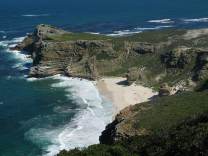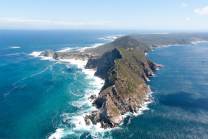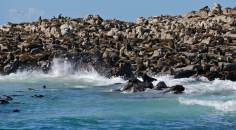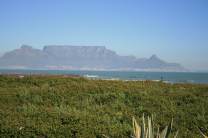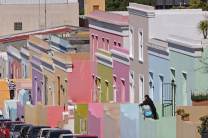Cape of Good Hope
The Cape of Good Hope (Afrikaans: Kaap die Goeie Hoop [ˌkɑːp di ˌχujə ˈɦʊəp], Dutch: Kaap de Goede Hoop [ˌkaːb də ˌɣudə ˈɦoːp] ( listen),Portuguese: Cabo da Boa Esperança [ˈkabu dɐ ˈboɐ ʃpɨˈɾɐ̃sɐ]) is a rocky headland on the Atlantic coast of the Cape Peninsula, South Africa.
There is a common misconception that the Cape of Good Hope is the southern tip of Africa, a misconception developed prior to contemporary scientific knowledge that was based on the belief that the Cape was the dividing point between that the Atlantic and Indian Oceans. In fact, the southernmost point of Africa is Cape Agulhas, about 150 kilometres (90 mi) to the east-southeast. The currents of the two oceans meet at the point where the warm-water Agulhas current meets the cold water Benguela current and turns back on itself—a point that fluctuates between Cape Agulhas and Cape Point (about 1.2 kilometres (0.75 mi) east of the Cape of Good Hope).
When following the western side of the African coastline from the equator, however, the Cape of Good Hope marks the point where a ship begins to travel more eastward than southward. Thus, the first modern rounding of the cape in 1488 by Portuguese explorer Bartolomeu Dias was a milestone in the attempts by the Portuguese to establish direct trade relations with the Far East (although Herodotus mentioned a claim that the Phoenicians had done so far earlier). Dias called the cape Cabo das Tormentas ("Cape of Storms"; Dutch: Stormkaap), which was the original name of the "Cape of Good Hope".
As one of the...

